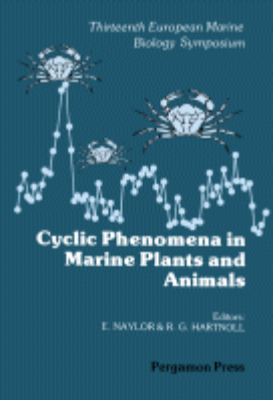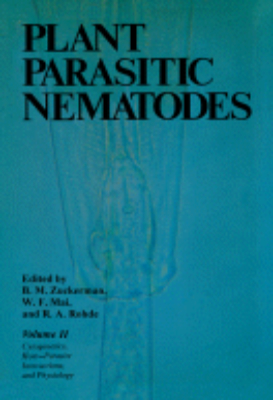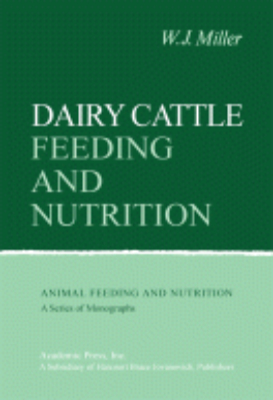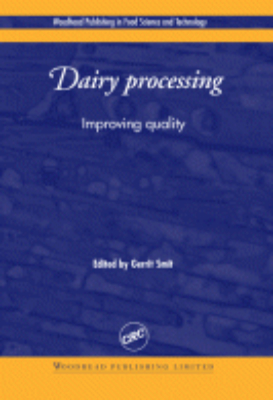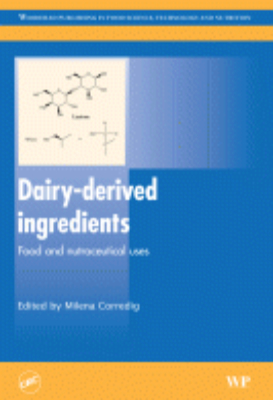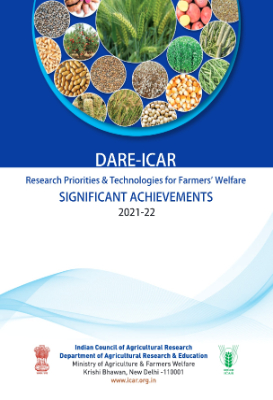ebooks
Current Topics in Biochemistry 1973
Current Topics in Biochemistry 1973 is based on a series of lectures held at the National Institutes of Health dealing with biochemistry. This group of lectures is the most recent in a program, which was established in the mid-1960s, to review various research fields for the scientific community at the Institutes. The topics for these series were chosen to emphasize active fields of general interest for a diverse audience of scientists. The speakers were therefore encouraged to present an overview of their fields rather than a detailed discussion of current research problems. The lectures in present collection cover the following topics: the problem of predicting the conformation of a protein from a knowledge of its amino acid sequence; studies on the structure of glutamic dehydrogenase; immunologic approaches to the study of proteins; the NIH shift and its implications for the mechanism of biological oxidations; separation of transcribable and repressed chromatin; gene expression in animal cells; and plasma lipoproteins and apolipoproteins.
Cyclic Phenomena in Marine Plants and Animals
Cyclic Phenomena in Marine Plants and Animals covers the proceedings of the 13th European Marine Biology Symposium. The title presents papers that tackle the cyclical biological processes in population ecology, developmental biology, metabolism, and the behavior of marine organisms. The text first covers topics about the population cycles of flora and fauna. Next, the selection details the rhythmic aspects of reproduction and growth, and then proceeds to discussing the cyclical aspects of production and metabolism. The text also deals with the rhythmic behavior and its control by environmental and physiological factors. The book will be of great use to students, researchers, and practitioners of marine biology and ecology.
Cytogenetics Host-Parasite Interactions and Physiology
Plant Parasitic Nematodes, Volume II: Cytogenetics, Host-Parasite Interactions, and Physiology is a masterful reference work in nematology that includes information in ultrastructure, enzymology, and chemistry of body composition; culturing; virus transmission; biological races; and nature of plant resistance. This volume provides information about plant parasitic nematode genetics and cytology. It first explains the history and the advances in nematology, and then discusses the more specific topics about the biological processes involving nematodes. The discussions on host-parasite interactions, biochemistry, and physiology follow these topics. This book also presents useful information regarding free-living and animal parasitic nematodes. This treatise is written to provide an up-to-date reference source for students, lecturers, and research professionals in plant parasitology, specifically nematology, and related fields.
Cytogenetics of Aneuploids
Cytogenetics of Aneuploids deals with the cytogenetic aspects of aneuploidy in plants, emphasizing the trisomics, monosomics, and nullisomics and cytogenetics of substitution lines as well as alien additions and substitutions. An account of aneuploidy in animals and man is also given. This volume is organized into 12 chapters and begins with an overview of terminology and chromosomal formulas, along with a brief history of the cytogenetics of aneuploids as a field of enquiry. The next chapters review the entire literature on trisomics, their sources, cytology, transmission rates, genetics, morphology, anatomy, physiology, and biochemistry. The discussion then shifts to monosomics and nullisomics, including their sources and cytology as well as breeding behavior, morphology, and genetic studies. Other uses of monosomics and nullisomics are considered. The following chapters deal with intervarietal substitutions and alien additions and substitutions, emphasizing different methods of producing substitution lines and their utility in genetic analysis and practical plant breeding programs. The book concludes by describing special features of aneuploidy in animals and highlighting specific cases of aneuploidy in the animal kingdom. This book will be of interest to plant breeders and geneticists.
Cytogenetics of Cells in Culture: 1964
Cytogenetics of Cells in Culture is a compendium of papers that deals with techniques to detect patterns of DNA replication, cellular control mechanisms, and chromosome analyses with automated instrumentation. Some papers discuss the effects of cell hybridization and of noxious substances such as radiation, chemical agents, and viruses on chromosomal patterns. Other papers focus on the influence of altered chromosomal complement on the survival of cells to long-term tissue culture or to ionizing radiation treatment. A couple of papers points out that naturally occurring chromosomal abnormalities in mammalian populations are relatively rare and are not necessarily associated with physical defects or disease. One paper notes that chromosomes in cells with different functions have different patterns of replication in which the changes are small and hidden. The chromosomes will usually be neutralized showing little of the characteristic pattern of replication or condensation during the early cleavage stages, that will later change into differentiated characteristic ways for each tissue type. Another paper describes chromosome breakage associated with viruses and DNA inhibitors. The compendium can prove beneficial for biochemists, micro-biologists, cellular researchers, and academicians involved in the study of cellular biology or physiology.
Cytogenetics of Cells in Culture: Volume 3 1964
Cytogenetics of Cells in Culture is a compendium of papers that deals with techniques to detect patterns of DNA replication, cellular control mechanisms, and chromosome analyses with automated instrumentation. Some papers discuss the effects of cell hybridization and of noxious substances such as radiation, chemical agents, and viruses on chromosomal patterns. Other papers focus on the influence of altered chromosomal complement on the survival of cells to long-term tissue culture or to ionizing radiation treatment. A couple of papers points out that naturally occurring chromosomal abnormalities in mammalian populations are relatively rare and are not necessarily associated with physical defects or disease. One paper notes that chromosomes in cells with different functions have different patterns of replication in which the changes are small and hidden. The chromosomes will usually be neutralized showing little of the characteristic pattern of replication or condensation during the early cleavage stages, that will later change into differentiated characteristic ways for each tissue type. Another paper describes chromosome breakage associated with viruses and DNA inhibitors. The compendium can prove beneficial for biochemists, micro-biologists, cellular researchers, and academicians involved in the study of cellular biology or physiology.
Dairy Processing
The dairy sector continues to be at the forefront of innovation in food processing. With its distinguished editor and international team of contributors, Dairy processing: improving quality reviews key developments and their impact on product safety and quality.The first two chapters of part one provide a foundation for the rest of the book, summarising the latest research on the constituents of milk and reviewing how agricultural practice influences the quality of raw milk. This is followed by three chapters on key aspects of safety: good hygienic practice, improvements in pasteurisation and sterilisation, and the use of modelling to assess the effectiveness of pasteurisation. A final sequence of chapters in part one discuss aspects of product quality, from flavour, texture, shelf-life and authenticity to the increasingly important area of functional dairy products. Part two reviews some of the major technological advances in the sector. The first two chapters discuss developments in on-line control of process efficiency and product quality. They are followed by chapters on new technologies to improve qualities such as shelf-life, including high pressure processing, drying and the production of powdered dairy products, and the use of dissolved carbon dioxide to extend the shelf-life of milk. Part three looks in more detail at key advances in cheese manufacture.Dairy processing: improving quality is a standard reference for the dairy industry in improving process efficiency and product quality.
Dairy-Derived Ingredients
Advances in technologies for the extraction and modification of valuable milk components have opened up new opportunities for the food and nutraceutical industries. New applications for dairy ingredients are also being found. Dairy-derived ingredients reviews the latest research in these dynamic areas.Part one covers modern approaches to the separation of dairy components and manufacture of dairy ingredients. Part two focuses on the significant area of the biological functionality of dairy components and their nutraceutical applications, with chapters on milk oligosaccharides, lactoferrin and the role of dairy in food intake and metabolic regulation, among other topics. The final part of the book surveys the technological functionality of dairy components and their applications in food and non-food products. Dairy ingredients and food flavour, applications in emulsions, nanoemulsions and nanoencapsulation, and value-added ingredients from lactose are among the topics covered.With its distinguished editor and international team of contributors, Dairy-derived ingredients is an essential guide to new developments for the dairy and nutraceutical industries, as well as researchers in these fields.
DARE-ICAR Achievements 2021-22
The strong collaboration of ICAR with other stakeholders at grassroots
level continued backstopping towards nation?s food and nutritional security
despite of challenges such as biotic and abiotic stresses in agriculture and
Covid pandemic. The major accomplishments of ICAR during 2021-22 are
precisely presented in this document.
The achievements are grouped into different themes. The release of 389
crop varieties, production of quality breeder seed and planting materials
and promotion of agricultural exports marked the impact of ICAR
technologies. While, the release of biofortified crop varieties, strengthening
POSHAN Abhiyan, promoting startups and entrepreneurs in food processing
especially in millets contributed significantly in enhancement of nutritional
outcome. The climate resilience in agriculture was addressed by releasing
resilient varieties, capacity building in new resilient villages, and revalidating
agriculture contingency plans of 15 districts. In addition, chemical free
agriculture, water footprint reduction, disruptive innovations for smart/precision agriculture summarizes R&D efforts for enhancing respective
resource use efficiencies at field level.
The major achievements in animal productivity and health management
were documentation of indigenous animal breeds, cloning technology
in breeding, feed supplement formulations, dairy technology, and Serosurveillance of animal diseases. The research breakthrough in aquatic
sector is summarized in Blue Revolution. The innovations in farm and postharvest equipments, processing protocols, and storage are covered under mechanization and reduction of post-harvest losses.
During the period, the agricultural education was strengthened through
revision of UG and PG course curricula, quality assurance in higher agricultural
education and enhancement in number and amount of scholarships. Further,
approval of road map for the implementation of New Education Policy 2020
and constitution of a committee for developing syllabus and curricula on
natural farming were the efforts to align agricultural education with National
Educational Policy.
The Lab to Land outreach by KVKs helped ICAR to reach the unreached
through establishment of new KVKs, conduct of FLDs, skill development
trainings, extension activities, and supply of large quality of seeds and
planting materials. Besides, documented ~71000 success stories of farmers
towards Doubling of farmers? income. Effective use of ICT in decision making
and marketing of farm produce for empowering farmers is summarised
under digital linkage with farmers.
The document is an effort to provide a glimpse of ICAR?s R&D achievements
during year 2021-22 under the guidance and supervision of Dr. T. Mohapatra,
former Secretary, DARE and DG,ICAR and support of Dr. Himanshu Pathak,
Secretary, DARE and DG, ICAR. The inputs from all the SMDs/Units are duly
acknowledged with thanks to all the DDGs/ADGs and concerned personnel.
The support of Mrs Suman Khurana, Senior Technical Officer of PIM section
is highly appreciated.
Data Analysis in Biochemistry and Biophysics
Data Analysis in Biochemistry and Biophysics describes the techniques how to derive the most amount of quantitative and statistical information from data gathered in enzyme kinetics, protein-ligand equilibria, optical rotatory dispersion, chemical relaxation methods. This book focuses on the determination and analysis of parameters in different models that are used in biochemistry, biophysics, and molecular biology. The Michaelis-Menten equation can explain the process to obtain the maximum amount of information by determining the parameters of the model. This text also explains the fundamentals present in hypothesis testing, and the equation that represents the statistical aspects of a linear model occurring frequently in this field of testing. This book also analyzes the ultraviolet spectra of nucleic acids, particularly, to establish the composition of melting regions of nucleic acids. The investigator can use the matrix rank analysis to determine the spectra to substantiate systems whose functions are not known. This text also explains flow techniques and relaxation methods associated with rapid reactions to determine transient kinetic parameters. This book is suitable for molecular biologists, biophysicists, physiologists, biochemists, bio- mathematicians, statisticians, computer programmers, and investigators involved in related sciences
Dento/Oro/Craniofacial Anomalies and Genetics
Dental defects may be the physical expression of genetic defects, and so they can often be seen in a variety of syndromes associated with malformations of organs. However, dental defects are often not recognized, identified, nor characterised despite representing a possible diagnostic sign for an undiagnosed condition. This book addresses this gap by providing an understanding of dental genetics and its developmental biology counterpart. With approximately seventy well-illustrated examples, the authors present the clinical oro-facial manifestations accompanying various syndromes, providing the necessary knowledge for diagnostic purposes, as well as giving insight into recent development for each specific condition. The clarity and format of this book make it an ideal support guide both in the clinic and while conducting research.
Design and Construction of Soil Anchor Plates
Primarily designed and constructed to resist outwardly directed loads imposed on the foundation of a structure, anchor plates play an important role in the design of structures (including seawalls, transmission towers, tunnels, buried pipelines, and retaining walls). Design and Construction of Soil Anchor Plates focuses on the various theories based on the design and construction techniques of anchor plates in soil mechanics. The focus of this reference is on design methods, theories, and procedures for constructing permanent or temporary ground anchors and anchored systems. Topics include: General Requirements of Vertical Anchor Plates and Design Criteria, Estimation of Ultimate Capacity in Vertical Anchor Plates, General Requirements of Vertical Anchor Plates and Design Criteria, Type and Length of Inclined Anchor Plates, Early Theories on Anchor Plates in Multi-Layers Soil, and Basic Theories on Passive Pressure in Vertical Anchor Plates. With this reference, researchers and designers will find a valuable guide to the various theories, techniques, and equations for anchor design.
Design Operation Interactions at Large Treatment Plants
Design-Operation Interactions at Large Treatment Plants deals with the different plans and designs to improve large treatment plans, the feasibility of these plans, the problems they might entail, and the solutions for current and prospective problems these treatment plants may face. The book shows the possible new directions that treatment plants may go to through assessment, planning, and new technology, as well as the the design for the treatment plants and the many considerations to be kept in mind in designing of one. Also included is an instructional guide on the functions an importance of the different parts of the treatment plant, the specific problems and their solutions, and improvements that can be done to it. The text is recommended for engineers and planners working in treatment plants, those in charge of sanitation and urban development and improvement, government agencies who wish to evaluate and even propose plans of building a treatment plant, and environmentalists who wish to know more about the treatment plant.
Determination of Metals in Natural Waters, Sediments, and Soils
Determination of Metals in Natural Waters, Sediments and Soils provides analytic labs with a comprehensive overview of the various methods available for analysis of metals and serves as a manual to determine metal concentrations in different media such as natural waters, waste waters, sediments and soils. The book begins with a discussion of sampling techniques and preservation and then covers metals in rivers, surface ground and mineral waters and metals in aqueous precipitation. It concludes with detailed information on analysis of metals in sediments. Determination of Metals in Natural Waters, Sediments and Soils provides a foundation for informed action by environmental interest groups and regulators and a starting point for further study by graduate students, professionals, and researchers.
Deterministic Versus Stochastic Modelling in Biochemistry and Systems Biology
"Stochastic kinetic methods are currently considered to be the most realistic and elegant means of representing and simulating the dynamics of biochemical and biological networks. Deterministic versus stochastic modelling in biochemistry and systems biology introduces and critically reviews the deterministic and stochastic foundations of biochemical kinetics, covering applied stochastic process theory for application in the field of modelling and simulation of biological processes at the molecular scale. Following an overview of deterministic chemical kinetics and the stochastic approach to biochemical kinetics, the book goes onto discuss the specifics of stochastic simulation algorithms, modelling in systems biology and the structure of biochemical models. Later chapters cover reaction-diffusion systems, and provide an analysis of the Kinfer and BlenX software systems. The final chapter looks at simulation of ecodynamics and food web dynamics. Key Features. Introduces mathematical concepts and formalisms of deterministic and stochastic modelling through clear and simple examples. Presents recently developed discrete stochastic formalisms for modelling biological systems and processes. Describes and applies stochastic simulation algorithms to implement a stochastic formulation of biochemical and biological kinetics"
Diagnosis and Management of Lameness in the Horse: 2003
This book provides a comprehensive approach to lameness diagnosis, and focuses on the importance of clinical examinations and diagnostic analgesia. It allows for accurate diagnosis of equine lameness to be made more quickly and effectively by differentiating between different horses and their activities. Detailed descriptions of diagnosis include the common problem of what to do when a diagnosis cannot be met. Musculoskeletal dysfunction is discussed as a cause of poor performance and the management of a broad range of conditions causing gait abnormalities are included.
Diagnosis and Management of Lameness in the Horse: 2011
Helping you to apply many different diagnostic tools, Diagnosis and Management of Lameness in the Horse, 2nd Edition explores both traditional treatments and alternative therapies for conditions that can cause gait abnormalities in horses. Written by an international team of authors led by Mike Ross and Sue Dyson, this resource describes equine sporting activities and specific lameness conditions in major sport horse types. It emphasizes accurate and systematic observation and clinical examination, with in-depth descriptions of diagnostic analgesia, radiography, ultrasonography, nuclear scintigraphy, magnetic resonance imaging, computed tomography, thermography, and surgical endoscopy. Broader in scope than any other book of its kind, this edition includes a companion website with 47 narrated video clips demonstrating common forelimb and hindlimb lameness as well as gait abnormalities.
Diagnostic and Surgical Arthroscopy in the Horse: 2005
The latest edition of this pioneering text atlas incorporates all the advances that have taken place in the field over the last decade. Minimally invasive procedures are now established as the method of choice for many applications in equine orthopaedic surgery, not only as an aid to diagnosis, but also as an alternative to conventional surgery. The text has been completely revised and massively expanded to reflect the rapid growth of this specialty, and covers many important new applications and techniques. This latest edition also features new, full colour, high resolution images throughout, including digital video. It remains the most comprehensive reference available, yet still retains the established text-atlas format, and continues to provide readers with both authoritative comment and practical guidance on all aspects of this important technique.
Diagnostic and Surgical Arthroscopy in the Horse: 2015
From the worldwide leader in equine surgery, Wayne McIlwraith, comes the new fourth edition of Diagnostic and Surgical Arthroscopy in the Horse. Completely revised and expanded, this comprehensive atlas covers all the need-to-know information within equine arthroscopy: instrumentation, general techniques, carpal joints, metacarpal and metatarsophalangeal joints, and tarsocrural joints. All the advances that have taken place in the field over the last decade are covered, particularly in the areas of postoperative management and rehabilitation. This trusted reference also provides an in-depth view of surgical procedures with new high-definition diagnostic and surgical arthroscopic images, as well as radiographs and composite illustrations. There is no better way to learn and master equine surgical procedures!
Diagnostic Cytology and Hematology of the Horse
Cytologic and hematologic evaluations are important primary diagnostic activities for veterinarians. Approximately 50% of samples are processed on site in the veterinary office; that number is growing, as veterinarians seek to bring more laboratory revenue to their practices. In doing so, however, it is important for veterinarians and staff to understand correct collection and handling procedures to avoid costly errors and make accurate diagnoses. DIAGNOSTIC CYTOLOGY AND HEMATOLOGY OF THE HORSE is a practical reference that presents common clinical findings in an easy-to-use text/atlas format. Following a general chapter on sample collections and techniques, the remainder of the book takes a "systems" approach, followed by chapters on specific types of fluid. Within systems chapters, normal findings are presented first. Then, abnormal findings are presented by "class" of problems, such as bacterial lesions, fungal lesions, parasitic lesions, and so on, in the case of the eye. Algorithms (flow charts) on sample evaluations enhance text discussions by guiding readers to the most likely cytologic diagnosis. In addition, there is a colour plate section featuring 64 illustrations for quick viewing and comparing cell types and infectious agents. The detailed index will aid utilization of this edition as a quick photographic and textual reference.
Diagnostic Radiology & Ultrasonography of the Dog and Cat
This essential guide to the interpretation of radiographs and ultrasonograms illustrates normal anatomy and frequently encountered abnormalities and anomalies. It provides easy access to the fundamentals of image interpretation with thorough discussions of the basic principles and techniques for producing high quality radiographs. Coverage includes the principles of ultrasound and its interaction with tissue, as well as how to avoid problems that can result from misinterpretation or overinterpretation of images. It provides a comprehensive review of canine and feline radiographic and ultrasonographic anatomy using a systems approach, focusing on normal features, so that abnormalities can be readily appreciated and interpreted.
Diagnostic Radiology and Ultrasonography of the Dog and Cat
Interpret diagnostic images accurately with Diagnostic Radiology and Ultrasonography of the Dog and Cat, 5th Edition. Written by veterinary experts J. Kevin Kealy, Hester McAllister, and John P. Graham, this concise guide covers the principles of diagnostic radiology and ultransonography and includes clear, complete instruction in image interpretation. It illustrates the normal anatomy of body systems, and then uses numbered points to describe radiologic signs of abnormalities. It also includes descriptions of the ultrasonographic appearance of many conditions in dogs and cats. Updated with the latest on digital imaging, CT, MR, and nuclear medicine, and showing how to avoid common errors in interpretation, this book is exactly what you need to refine your diagnostic and treatment planning skills!
Diagnostic Techniques in Equine Medicine
Whether to confirm a diagnosis or to narrow down a list of differentials, a wide range of tests, procedures and methods of investigation is available to veterinarians in equine practice. However, practical information about particular techniques is often difficult to find in standard textbooks of equine medicine and surgery. Diagnostic Techniques in Equine Medicine provides the practical information required to be able to undertake all these procedures. This second edition is organised by techniques per organ system, has been updated thoroughly and includes new material.


